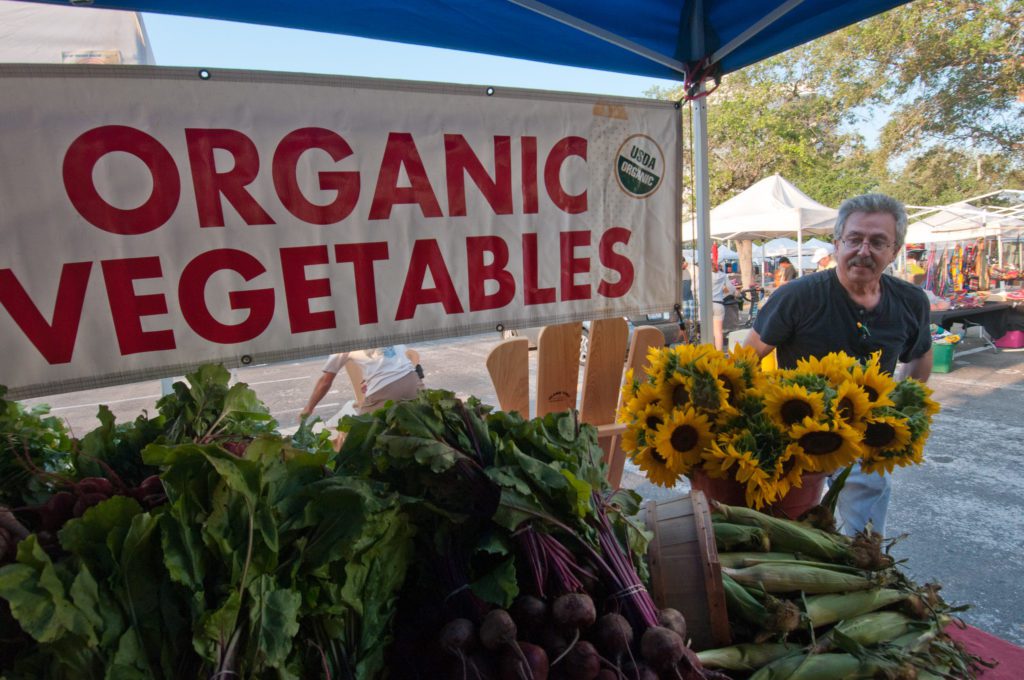Oct 6, 2023
Crop insurance additions include organic transition coverage
The USDA is beefing up crop insurance options for specialty crop and organic producers, including rolling out new and expanded options based on feedback from farmers and ranchers.
To do this, USDA’s Risk Management Agency (RMA) accelerated its outreach efforts to hear directly from producers across the country by hosting in-person and virtual roadshows and making investments in risk management education. These improvements are part of a comprehensive effort to improve risk management tools and other programs for a wide variety of producers as well as expand access to organic markets.

“We’re committed to working with specialty crop and organic producers to develop crop insurance options that fit their needs,” Marcia Bunger, RMA administrator, said in a news release. “We’ve listened, and we’re proud of our efforts to deliver crop insurance options that meet the needs of producers as well as to share information on available crop insurance options.
“This is part of USDA’s commitment to reach underserved and underreached producers and to help producers access new and better markets,” she said in the release.
From 1990 to 2022, liabilities for insured specialty crops rose from $1 billion to more than $23 billion. Over the past 20 years, the number of individual specialty crops insured under crop insurance programs increased by 27%. Currently, there are more than 70 individual specialty crops insured under crop insurance programs.
There are seven new insurance programs, including three that aren’t specific to fruit production.
Transitional and Organic Grower Assistance Program (TOGA)
In 2022, RMA offered this new program to reduce a producer’s overall crop insurance premium bill, allowing them to continue using organic agricultural systems. Premium benefits for TOGA included: 10 percentage points of premium subsidy for all crops in transition, $5 per acre premium benefit for certified organic grain and feed crops, and 10 percentage points of premium subsidy for all Whole-Farm Revenue Protection (WFRP) policies covering any number of crops in transition to organic or crops with the certified organic practice.
Tropical Storm Coverage
For crop year 2023 and succeeding years, RMA added a new option to Hurricane Insurance Protection – Wind Index (HIP-WI) for named tropical storm weather events. The Tropical Storm Option covers damage caused by strong weather systems not categorized as hurricanes. Both a wind and precipitation trigger must occur for an indemnity to be paid. This new option helped many producers recover after Hurricane Idalia this year. About 60% of eligible policies elected this option.
Controlled Environment

Beginning in crop year 2024, producers can insure plants produced in a controlled environment against disease that occurs in their facility. This program will provide the following benefits: simple application and policy renewal process, like the Nursery Value Select program, and insurance for controlled environment producer-selected plant categories. In addition to specialty crop and organic producers, this policy will greatly benefit urban producers.
The Risk Management Agency has also made improvements to existing insurance programs.
Whole-Farm Revenue Protection Program (WFRP)
Several improvements will begin in the 2024 policy year: allowing all eligible producers to qualify for 80% and 85% coverage levels; allowing producers to purchase catastrophic coverage level policies for individual crops with WFRP; expanding yield history to a 10-year maximum (from four years) for all crops not covered by another federal crop insurance policy; making the policy more affordable for single commodity producers; and allowing producers to customize their coverage by choosing whether WFRP will consider other federal crop insurance policies as primary insurance when calculating premium and revenue to count during claim time.
Micro Farm
Several updates were made to Micro Farm including: moving the sales closing date to a less busy time of year to help agents dedicate time to marketing the program, allowing producers to purchase other federal crop insurance with Micro Farm, allowing vertically integrated entities to be eligible and making the Expanding Operations feature available.
Pistachios
Several revisions were made to the Pistachio policy including: allowing insurance for producers with fewer than four years of production records under the new Transitional Yields (T-Yields); clarifying simple average approved yield for APH databases containing T-Yields; clarifying variability adjustment requirements for actual production history databases; and allowing assigned yields and temporary yields if indicated in the Special Provisions.
Quality Loss Option (QLO)
RMA is making the QLO available to several initial specialty crops, including California avocados, blueberries, cranberries, grapes, peaches, stone fruit, and table grapes. RMA plans to make the option available to additional specialty crops in the upcoming months after further review.
 The agency has implemented outreach efforts and risk management education to inform producers of the new and improved RMA program offerings.
The agency has implemented outreach efforts and risk management education to inform producers of the new and improved RMA program offerings.
Over the past two years, RMA has engaged with more than 700,000 producers and crop insurance professionals through a multi-faceted outreach approach, interacting with 60,000 stakeholders at 560 events across the nation and hosting 39 in-person and virtual listening sessions to discuss prevented planting updates, apples and cherries. Additionally, RMA hosted more than 3,000 producers during the “RMA Roadshow” that featured in-person and virtual events across the country. The Roadshow informed producers about updates and improvements to WFRP and Micro Farm.
In August, RMA awarded about $6.5 million to 22 organizations to educate underserved, specialty, small-scale and organic producers on farm risk management and climate-smart farm practices. Through Risk Management Education (RME), RMA partners with organizations, such as nonprofits and land grant universities, to develop training and resources for producers about risk management options. The almost $6.5 million investment builds on the $6.5 million that RMA has already provided in partnerships since 2021.
Specialty crop producers can learn more on RMA’s Specialty Crop Page or by contacting one of RMA’s specialty crop liaisons, who serve as points of contact for local specialty crop producers. Organic producers can learn more at RMA’s Organic webpage. Producers can receive the most up-to-date information about RMA insurance options for specialty crops by subscribing to GovDelivery.
Crop insurance is sold and delivered solely through private crop insurance agents. A list of crop insurance agents is available at all USDA Service Centers and online at the RMA agent locator. Learn more about crop insurance and the modern farm safety net at rma.usda.gov or by contacting your RMA Regional Office.






